#20 January 1503
Text


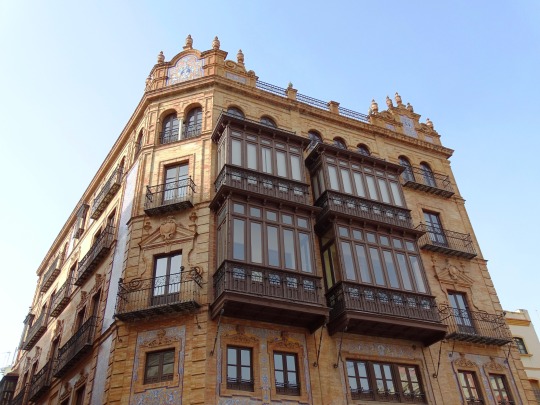

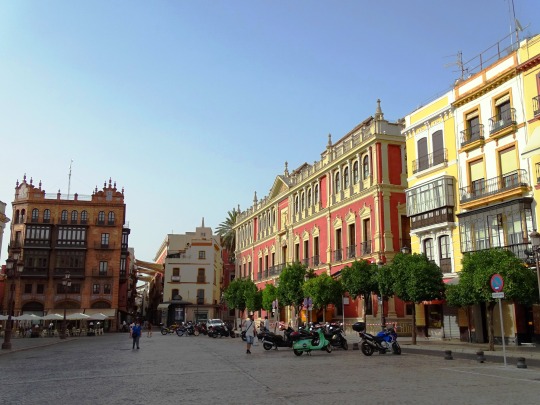
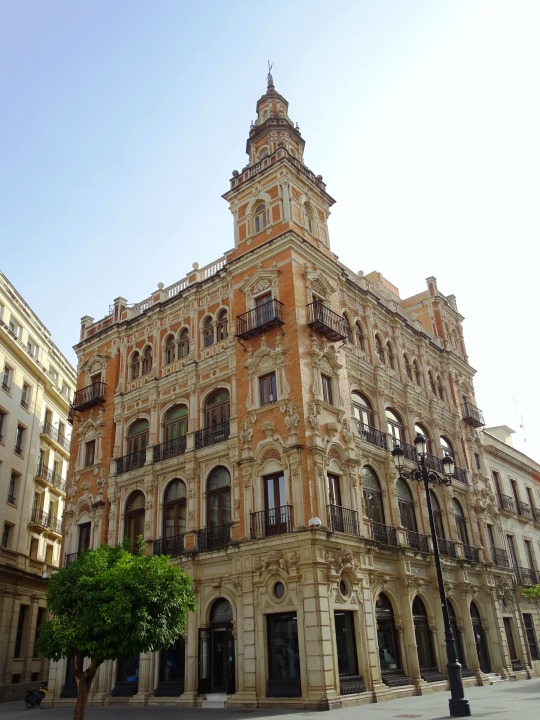
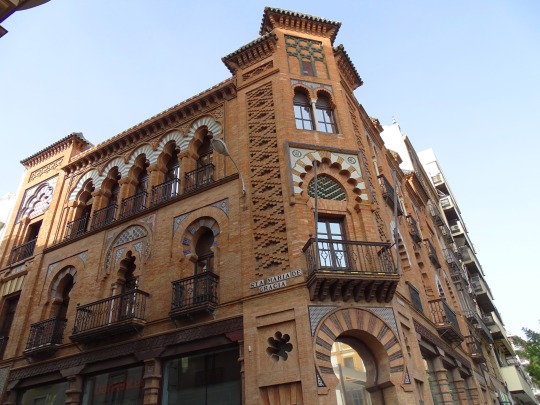
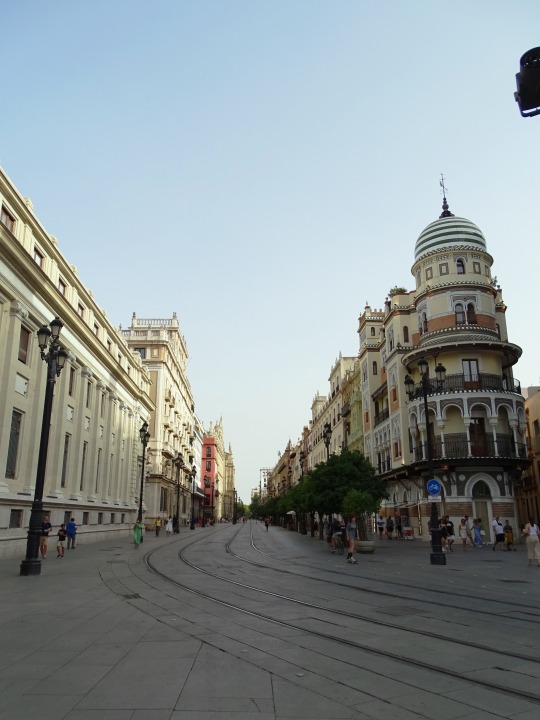
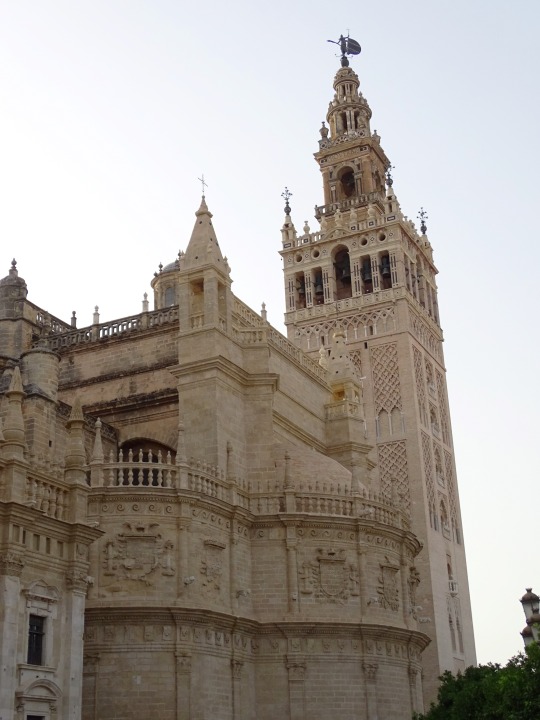




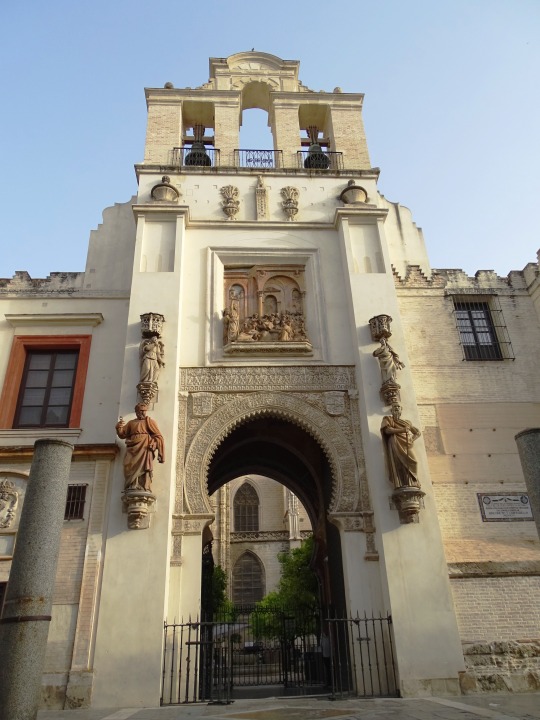
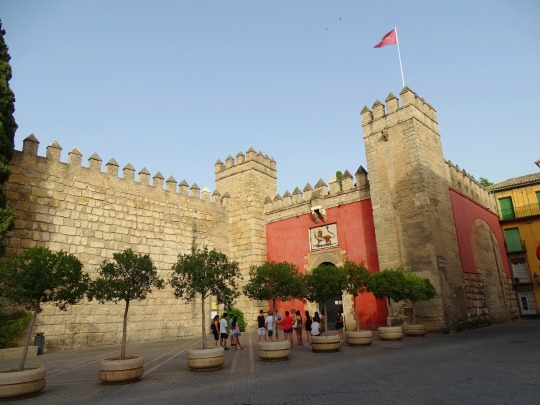
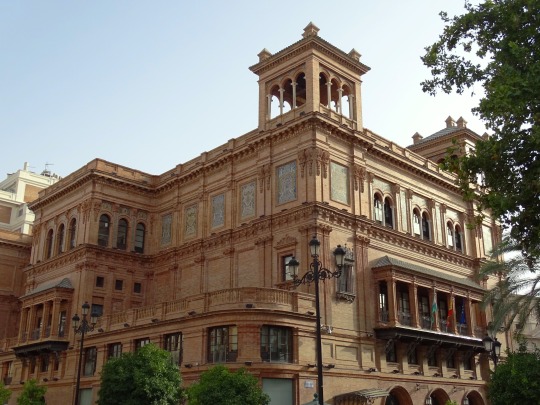
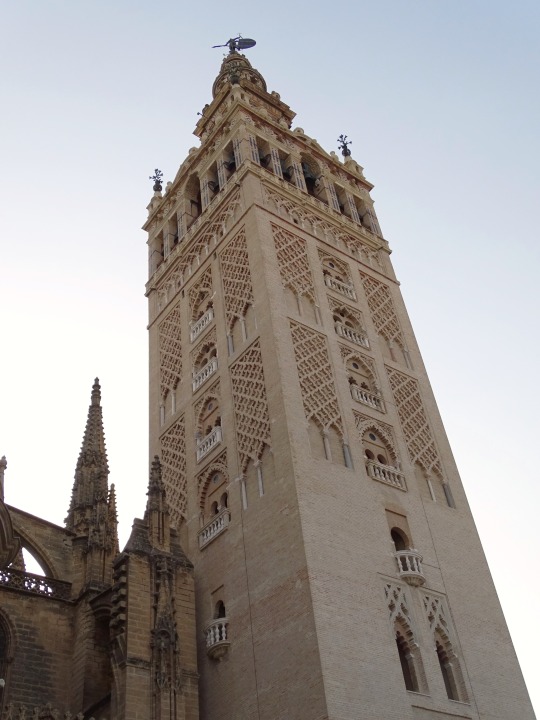
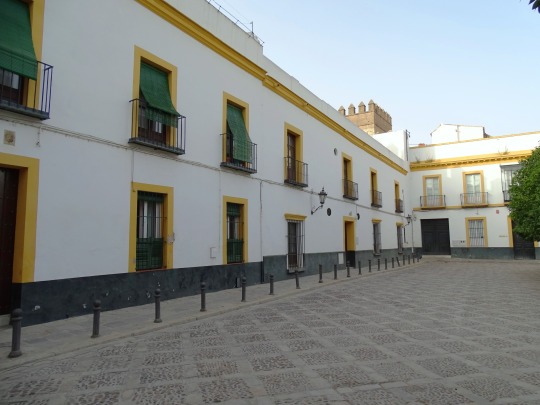

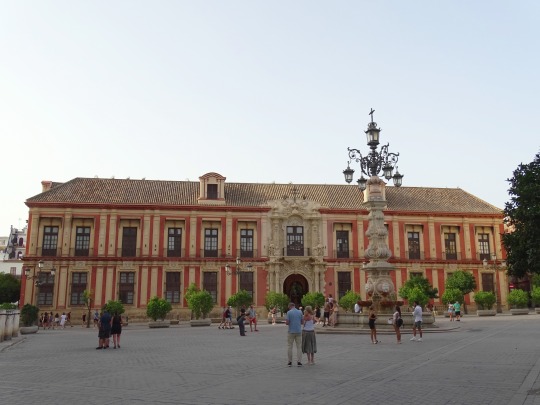

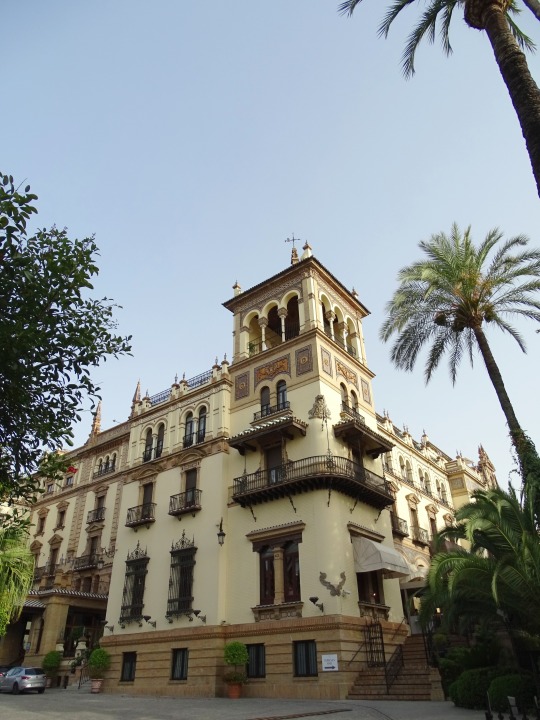
The Casa de Contratación (House of Trade) or Casa de la Contratación de las Indias ("House of Trade of the Indies") was established by the Crown of Castile, on January 20, 1503 in the port of Seville (and transferred to Cádiz in 1717) as a crown agency for the Spanish Empire.
#Casa de la Contratación de las Indias#established#20 January 1503#Spain#anniversary#Spanish history#Seville#Sevilla#Seville Cathedral#Avenida de la Constitución#architecture#cityscape#summer 2021#travel#tourist attraction#landmark#original photography#Plaza de San Francisco#city hall#España#Southern Europe#La Adriatica Building by José Espiau y Muño#Híspalis Fountain#Royal Alcázars of Seville#Hotel Alfonso XIII#Casa Lonja de Mercaderes#vacation
2 notes
·
View notes
Text
Estrada also showed concern over the papal dispensation which had not yet appeared. Henry [VII] ordered an investigation into its whereabouts, to be conducted by Adriano Castellesi, who made a report on 4 January 1504 that the matter was still under consideration. [...] Castellesi returned to Italy, where he unsuccessfully continued to seek the dispensation. Pope Julis claimed to have granted it 'by word of mouth,' but Isabella believed that he was awaiting the English embassy. Henry's ambassador did arrive in Rome on 20 May, and was championed by Castellesi, but returned home again empty handed. In July the Pope wrote to King Henry explaining that he had not intended to delay the issue of the paperwork, only to afford it the proper 'mature consideration' and the 'brief' for the dispensation arrived in England that August. By that October, the all important paperwork had still not been dispatched [...] [and] when the actual papal bull finally arrived it was dated to December 1503, indicating the level of procrastination or 'consideration' it required, although it is not impossible that it may have been backdated.
Catherine of Aragon: An Intimate Life of Henry VIII's True Wife
#thought this was interesting...since the general narrative is that the dispensation#was nothing unusual and it was granted pretty much immediately upon its request#this doesn't necessarily seem to have been the case#amy licence#also that he had his son repudiate the betrothal by the next year.#so it took the papacy three years to decide whether or not to grant#and seven years to decide whether or not to uphold? lol.....
3 notes
·
View notes
Text
1. Evidence for completion of CAS project.
CAS Project : Runmageddon
https://www.tumblr.com/cas-antoni-pniewski/720182129282154496/cas-project-runmageddon-prepared-for?fbclid=IwAR0bSzbwXpQNdEzJLtY1Cm9zUtrslMCWaBTkiVXJRxgrTJZIls8UvEmSTmw
https://www.tumblr.com/cas-antoni-pniewski/730008183550181376/cash-project-proof-these-are-photos-that-clearly?fbclid=IwAR2gPANFifrC060JA9CotkJR0XhGuKc-_q3m2FDDDH51vUF74x4usZjz4Ak
https://www.tumblr.com/cas-antoni-pniewski/738866614735421440/preparation-to-the-runmagedon-2-months-before-my?fbclid=IwAR3ExvI4wJq4MYBtqOBN6w5Vux4eMesWSNXtJyCLQ3yTpedSqEgxjpfUNeg
https://www.tumblr.com/cas-antoni-pniewski/738866651977695232/runmagedon-cas-project-here-comes-the-time-to?fbclid=IwAR1xHclNvjX50CEUxG2CUOmw1Uu50CukDn3ikBb3RfQCgO4lQDJnDamK2Wg
2. Evidence of identification of strengths and areas for personal growth (LO1).
https://www.tumblr.com/cas-antoni-pniewski/736602739443892224/activity-29-11112023-for-my-next-activity-i?fbclid=IwAR1-dDtk8GkrI650pq_3FY0D6fRVpnk1Co1asoBZ6Kxul2B8v_qwWTshNeI
https://www.tumblr.com/cas-antoni-pniewski/736619775117213696/creativity-25-this-creativity-post-wont-be?fbclid=IwAR0CBUqL-vVOX6o6MzpnfoDa4Meuyi3sbYXUWQ3sTzQBjmGE09gCJhPs8ss
3. Evidence of undertaking new challenges and developing new skills in the process (LO2).
https://www.tumblr.com/cas-antoni-pniewski/719285253884297216/1503-activity-9-for-my-activities-in-march-i?fbclid=IwAR2U6rgU9RN21Ce1vruHFo9uqQ_1hkYUP8vtQ6KGwSnbH2Wi80bBu_jtRME
https://www.tumblr.com/cas-antoni-pniewski/698936761902088192/creativity-1-when-i-was-7-i-really-enjoyed-my?fbclid=IwAR0w_-X8P1VAqxMnPP86jv6oB7kj_m53U44Pxd64tEG017MPfwdFh0SiUGU
4. Evidence of initiating and planning a CAS experience (LO3).
https://www.tumblr.com/cas-antoni-pniewski/719284966699188224/31-0801-02-service-9-for-my-service-in-february?fbclid=IwAR2arPkHQaS8Lhz6rW-xOAJE8LQJY_eeSp3T8SpBKeULm8rqjXGOuPoepuM
https://www.tumblr.com/cas-antoni-pniewski/730007523188473856/activity-19-for-the-next-activity-me-and-my?fbclid=IwAR3jRlrWwESmgQ5qpYBS7KugHCfjs9LdCad9dysc6IJVtzOyZEpBJsFfokQ
5. Evidence of commitment and perseverance in CAS experiences (LO4).
https://www.tumblr.com/cas-antoni-pniewski/736619775117213696/creativity-25-this-creativity-post-wont-be?fbclid=IwAR37T2EOG1pi598zfzLgbtyVV7_oau_eIl0ShOUfPGJzp6AbtIgDHw8L1yw
3188473856/activity-19-for-the-next-activity-me-and-my?fbclid=IwAR3jRlrWwESmgQ5qpYBS7KugHCfjs9LdCad9dysc6IJVtzOyZEpBJsFfokQ
6. Evidence of demonstrating the skills and recognizing the benefits of working collaboratively (LO5).
https://www.tumblr.com/cas-antoni-pniewski/736603037772251136/service-20-22112023-for-the-activity-in?fbclid=IwAR1AtIyBtG8vgclhk2y7JUvT7ZuBZhXZVB47GfldcGe8ngwIIN1yPwvtleY
https://www.tumblr.com/cas-antoni-pniewski/736603154056167424/service-24-11122023-on-monday-i-have?fbclid=IwAR0HK0Rgyk1xhnnWu_PWmqhjjTpfI8ZliK5a1xqtm_bE93u3IuwLtTjjgfs
7. Evidence of engagement with issues of global significance (LO6).
https://www.tumblr.com/cas-antoni-pniewski/744412929930182657/service-26-for-my-first-service-in-the-new-my
https://www.tumblr.com/cas-antoni-pniewski/719285228104990720/1905-service-16-for-my-service-in-may-i-helped?fbclid=IwAR25IKj7OcqlfDAhYiAFWRC26dvqazPcLha7JErh9-YZN97Qj-Ef5rLKt3Q
8. Evidence of recognizing and considering the ethics of choices and actions (LO7).
https://www.tumblr.com/cas-antoni-pniewski/744412929930182657/service-26-for-my-first-service-in-the-new-my
https://www.tumblr.com/cas-antoni-pniewski/719285228104990720/1905-service-16-for-my-service-in-may-i-helped?fbclid=IwAR25IKj7OcqlfDAhYiAFWRC26dvqazPcLha7JErh9-YZN97Qj-Ef5rLKt3Q
9. Evidence of reflection on significant CAS experiences.
https://www.tumblr.com/cas-antoni-pniewski/744412929930182657/service-26-for-my-first-service-in-the-new-my
https://www.tumblr.com/cas-antoni-pniewski/744412846747680768/creativity-32-for-my-last-creativity-i-have
https://www.tumblr.com/cas-antoni-pniewski/744412799384649728/activity-34-for-my-second-activity-in-january-i
0 notes
Photo

Helena Ivanovna of Moscow (19 May 1476 – 20 January 1513) was daughter of Ivan III the Great, Grand Prince of Moscow, and an uncrowned Grand Duchess of Lithuania and Queen of Poland as she would not convert from Eastern Orthodoxy to Catholicism. Her childless marriage to Grand Duke of Lithuania and later King of Poland Alexander Jagiellon was a constant source of tension between the Grand Duchy of Moscow and the Grand Duchy of Lithuania. Instead of guaranteeing peace, Helena's marriage gave her father Ivan III an excuse to interfere in Lithuanian affairs accusing Alexander of mistreating Helena and repressing Orthodox believers. This became the pretext to renew the Muscovite–Lithuanian Wars in 1500. The war ended with a six-year truce in 1503; the Grand Duchy of Lithuania lost about a third of its territory. Despite political tensions and religious differences, the marriage was a loving one and the royal couple was close. After her husband's death in 1506, Helena wanted to return to Moscow but was not allowed. When she planned to run away, she was arrested and reportedly poisoned.
1 note
·
View note
Text

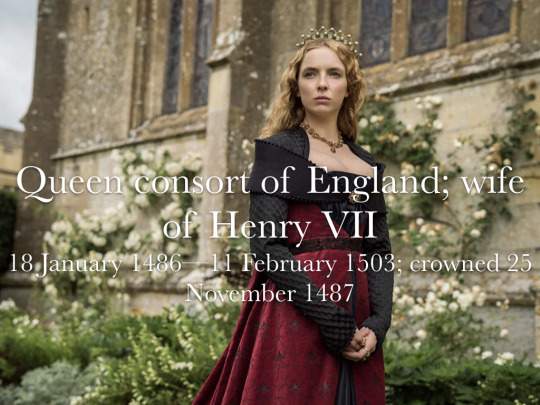
Queen consorts of England and Britain | [33/50] | Elizabeth of York
Elizabeth was Queen consort of England from 1486 until 1503 as the wife of Henry VII. She was born on 11 February 1466 as the daughter of Edward IV and Elizabeth Woodville. At age 3 she was briefly betrothed to George Neville. After he rebelled against Elizabeth’s father, the betrothal was broken off. In 1475, Elizabeth was then betrothed to Charles of France who would become King Charles VIII. The engagement lasted seven years, until Louis XI (Charles’ father) broke it off. On 9 April 1483, Elizabeth’s father died. Her younger brother briefly ascended to the throne until her uncle, Richard, took over and became King himself. Richard had Elizabeth and her siblings declared illegitimate and she, along with her mother and siblings, took refuge in Westminster Abbey. After this, Elizabeth’s mother began to conspire with Margaret Beaufort and Elizabeth was betrothed to Henry Tudor. After the death of Anne Neville in 1485, there were rumors that Elizabeth would marry her uncle, Richard, however these rumors were false and a marriage between them never came to pass. On 22 August 1485, King Richard was defeated in battle by Henry Tudor, making him King Henry VII. Henry decided to take Elizabeth as his wife and the two were married on 18 January 1486. Elizabeth got pregnant shortly afterwards and gave birth, slightly prematurely, to her first child on 20 September—a boy named Arthur. Elizabeth was crowned a year later and subsequently gave birth to several more children. Although Henry and Elizabeth’s marriage started out as political, the two grew to genuinely care about each other. Elizabeth also played a somewhat active role in government. In 1502, Elizabeth’s oldest son died and Elizabeth, in an effort to have another heir, got pregnant again at 36—quite advanced for this period. In February 1503, Elizabeth gave birth to a daughter. The daughter died shortly after birth and Elizabeth herself died on 11 February 1503—her 37th birthday. Her husband was greatly affected by her death, becoming increasingly isolated and miserly. He never re-married and himself died just six years later and was buried next to her.
27 notes
·
View notes
Text
1. Franklin D. Roosevelt (32): 4422 days
2. Thomas Jefferson (3): 2922
2. James Madison (4): 2922
2. James Monroe (5): 2922
2. Andrew Jackson (7): 2922
2. Ulysses S. Grant (18): 2922
2. Grover Cleveland (22, 24): 2922 (non-consecutive)
2. Woodrow Wilson (28): 2922
2. Dwight D. Eisenhower (34): 2922
2. Ronald Reagan (40): 2922
2. Bill Clinton (42): 2922
2. George W. Bush (43): 2922
2. Barack Obama (44): 2922
14. George Washington (1): 2865*
15. Harry S. Truman (33): 2840
16. Theodore Roosevelt (26): 2728
17. Calvin Coolidge (30): 2041
18. Richard Nixon (37): 2027
19. Lyndon B. Johnson (36): 1886
20. William McKinley (25): 1654
21. Abraham Lincoln (16): 1503
22. John Quincy Adams (6): 1461
22. Martin Van Buren (8): 1461
22. James K. Polk (11): 1461
22. Franklin Pierce (14): 1461
22. James Buchanan (15): 1461
22. Rutherford B. Hayes (19): 1461
22. Benjamin Harrison (23): 1461
22. William Howard Taft (27): 1461
22. Herbert Hoover (31): 1461
22. Jimmy Carter (39): 1461
22. George H.W. Bush (41): 1461
22. Donald Trump (45): 1461
34. John Adams (2): 1460**
35. John Tyler (10): 1430
36. Andrew Johnson (17): 1419
37. Chester Alan Arthur (21): 1262
38. John F. Kennedy (35): 1036
39. Millard Fillmore (13): 969
40. Gerald Ford (38): 895
41. Warren G. Harding (29): 881
42. Zachary Taylor (12): 492
43. James A. Garfield (20): 199
44. Joe Biden (46): 87+ [as of April 17, 2021]
45. William Henry Harrison (9): 31
More than 2 terms: 1/45
2 full terms: 13/45
Between 1 and 2 terms: 7/45
1 full term: 13/45
Less than 1 term: 10/45
Pending: 1/45
*Washington was elected to 2 full terms, but was sworn in two months late, so he only served 2865 out of 2922 days
**John Adams was elected to 1 full term, but the year 1800 was not a leap year, so his was a day shorter than everyone else's. Same thing would have happened to William McKinley in 1900. giving him 2921 out of 2922, but he was assassinated early int his second term. George W. Bush served the full 2922 because the year 2000 was a leap year.
Joe Biden surpassed William Henry Harrison on February 21, 2021 (32 days)
He will surpass James A. Garfield on August 8, 2021 (200 days)
Zachary Taylor on May 28, 2022 (493 days)
Warren G. Harding: June 21, 2023 (882)
Gerald Ford: July 5, 2023 (896)
Millard Fillmore: September 17, 2023 (970)
John F. Kennedy: November 23, 2023 (1037)
Chester Alan Arthur: July 6, 2024 (1263)
Andrew Johnson: December 10, 2024 (1420)
John Tyler: December 21, 2024 (1431)
John Adams: January 20, 2025 (1461)
3 notes
·
View notes
Text
Puerto Rico's History
XV Century
Taíno Indians who inhabited the territory, called the island Boriken or Borinquen which means: "the great land of the valiant and noble Lord" or "land of the great lords". Today this word -used in various modifications- is still popularly used to designate the people and island of Puerto Rico. The Taíno Indians, who came from the Orinoco River in present Venezuela, inhabited the major portion of the island when the Spaniards arrived. The Taíno Indians, lived in small villages or "bateyes", and were organized in clans, led by a Cacique, or chief. They were a peaceful people who, with a limited knowledge of agriculture, lived on such domesticated tropical crops as pineapples, cassava, and sweet potatoes supplemented by seafood.
1492
On April 17, Ferdinand and Isabella of Spain signed the agreement to finance and set the terms of Columbus's voyage to the Indies. The document is known as the Capitulations of Santa Fe. The agreement established that Columbus would become the viceroy and governor of all discovered land and rights to 10% of all assets brought to Spain, among other terms.
On August 3, the fleet of three ships --the Niña, the Pinta, and the Santa María-- set forth from Palos, Spain. The first sighting of land came at dawn on October 12. They landed at San Salvador, in the Bahamas. Thinking he had reached the East Indies, Columbus referred to the native inhabitants of the island as "Indians," a term that was ultimately applied to all indigenous peoples of the New World.
1493
Christopher Columbus
After the success of Columbus's first voyage, he had little trouble convincing Ferdinand and Isabela of Spain, to follow up immediately with a second voyage. Unlike the exploratory first voyage, the second voyage was a massive colonization effort. On September 25, Christopher Columbus set sail from Cádiz, Spain with 17 ships and almost 1,500 men. The second voyage brought European livestock (horses, sheep, and cattle) to America for the first time.
On November 19, Christopher Columbus discovered the island in his second voyage to the New World. He found the island populated by as many as 50,000 Taíno or Arawak Indians. The Taíno Indians who greeted Columbus made a big mistake when they showed him gold nuggets in the river and told him to take all he wanted. Originally the newcomers called the island San Juan Bautista, for St. John the Baptist and the town was named Puerto Rico ("rich port") for its abundance of natural resources, specially gold and its excellent location. It was not until later that the two names were switched. Thanks in part to the enthusiasm of ambitious Juan Ponce de León, a lieutenant to Columbus, the city of Puerto Rico, it quickly became Spain's most important military outpost in the Caribbean.
1501
The Spanish Crown permitted export of slaves to America.
1503
Governor Nicolás de Ovando opposes the importing of slaves.
First slaves arrive in Hispañola.
1505
On March 25, Vicente Yañez Pinzón Captain was appointed "corregidor" of the island San Juan Bautista and governor of the fort that he was to construct therein.
1506
On May 20, Christopher Columbus died in Valladolid, Spain.
1508
Spanish colonization begins. King Ferdinand II of Aragon assigned Ponce de León to lead an official expedition to the island.
On January 14, first school in Puerto Rico was established in Caparra.
On June 15, 1508, Nicolas de Ovando, the viceroy of Espanola (Hispaniola), granted Ponce de Leon the privilege to explore and subjugate the island of San Juan Bautista.
On August 8, Juan Ponce de León founded the Caparra Village near the bay on the north coast, not far from the modern city of San Juan. It became the first European settlement in Puerto Rico.
Puerto Rican archeologist, Don Ricardo Alegria estimated that the island had some 30,000 inhabitants.
1509
The Spanish authorities refused to grant to Diego Columbus (Christopher's son) privileges to all discovered land, as a results, the Crown officially appointed Juan Ponce de León governor of the island.
The first repartimiento in Puerto Rico was established, this system consisted of distributing among officials and colonists fixed numbers of Indians for wage-free and forced labor.
The Spanish Crown instituted the encomienda after several priests protested against the treatment to Indians under the repartimiento system. The terms of the new agreement specified that Spaniards were obliged to pay the Indians for their labor and to teach them the Christian religion, but they soon reduced the Indians to a condition of abject slavery, claiming that the Indians were inferior and subhuman; therefore Indians were forced to work from dawn until dusk, under threat of corporal punishment and death.
In his book "La colonización de Puuerto Rico", historian Salvador Brau states that the repartimiento recorded 60,000 Indians, six years later in 1515, only 14,636 remained.
Juan Garrido is the first African identified in Puerto Rico. A free man, he arrived with the Ponce De León expedition. Garrido later participates in the colonization of Florida and serves with Spanish explorer Hernan Cortex in the conquest of Mexico.
1510
Differences between Spaniards and Taíno Indians began and conflicts soon arose as the settlers began subjugating the Taino.
The Cacique Urayoán ordered his warriors to drown Diego Salcedo to determine whether or not the Spaniards were immortal, as they believed that Spanish colonizers had divine powers. It is told that after they drowned Diego, they watched him for several days until they were sure that he was dead.
1511
The Taíno Indians' after learning through the drowning of Diego Salcedo, that the Spanish were mortal, revolted against Spaniards with no success. Ponce de León orders 6,000 shot on the spot in the town square; survivors flee to mountains or left the island.
Diego Columbus won rights to all land discovered by his father after presenting his case to the courts in Madrid. King Ferdinand ordered Ponce de Leon to be replaced as governor by Diego Columbus. Ponce de León not wishing to serve Diego, obtained title to explore the Upper Bahamas and areas to the North.
On August 8, Pope Julius II created two dioceses in Puerto Rico, the bishop of which were all suffragans of the archbishopric of Seville. The Canon of Salamanca, Alonso Manso, was appointed bishop of the Puerto Rican diocese and took possession in 1513 - the first bishop to arrive in America.
On November 11, the Spanish Crown granted a Coat of Arms to the Island of Puerto Rico.
1512
On September 26, the first school of advanced studies was established by Bishop Alonso Manso.
On December 27, the Burgos Law is issued, by Ferdinand II, the Catholic, of Aragón, regulated relations between Spaniards and the conquered Indians, particularly to ensure the spiritual and material welfare of the latter, who were often severely treated.
After the Taino upprising in 1511, a second settlement in San Germán was founded.
1513
On January 27, with the decline of Taino slaves, African slaves were introduced into the island.
On July 28th, the Complementary Declaration was established. Granting natives who were clothed, Christian, and capable could live their own lives.
On March, Ponce de León sailed into the Bahamas headed toward Florida.
1514
The Spanish Crown granted permission to Spaniards to marry native Taíno Indians.
Hernando de Peralta received permission to obtain 2 white slaves, possibly Arab or Arab Descent.
Caribe Indians attacked settlements along the banks of the Daguao and Macao rivers that had been founded by Diego Columbus.
Mona Island is officially annexed to Puerto Rico.
1515
On July, a hurricane strikes the island, killing many Indians.
1517
King Carlos V authorized the importation of 4,000 slaves to the Caribbean.
1519
Government Center is moved from Villa de Caparra to the isle of San Juan.
Puerto Rico became the general headquarters of the Inquisition, after Pope Leo X declared the island the first ecclesiastical headquarters in the New World.
1520
On July 12, King Charles I of Spain issued a royal decree collectively emancipating the remaining Taíno population. The order came into place due to the large number of Taino deaths attributed to the continuing bondage systems. A population of 60,000 was reduced to 4,000 in seven years.
1521
Juan Ponce de Leon
Caribe Indians attacked the south coast.
The city and the Island exchanged names, and the City of San Juan Bautista de Puerto Rico became the official capital.
Casa Blanca (White House) was built. The house was owned by Ponce de León's family until the late 18th century.
The ever arriving Spaniards settlers, many of them gold-seekers, brought no women on their ships. To populate the country, the Spaniard took Indian women. With the arrival of African slaves, other elements were added. This historic intermingling has resulted in a contemporary Puerto Rico without racial problems.
Juan Ponce de León organized an expedition, setting out for Florida, where he suffered serious injuries. He took refuge on La Habana, Cuba, where he died.
1522
On January 24, San Jose Church is founded, it is the oldest church still in use in America.
1523
The first sugar cane processing plant is built.
The Convento de Santo Domingo (Dominican Friars Community) was built. The convent organized the first library in the island.
1524
The first hospital was built, called Concepción, by Bishop Alonso Manso.
1528
On their attempt to capture the Island the French attacked many settlements. On October 11, the French sacked and burned San Germán. All the other first settlements-Guánica, Sotomayor, Daguao and Loíza-had disappeared. Only the capital remained.
1530
Sugar became the most important agricultural product.
Governor Francisco Manuel de Landó conducted the first census. The Taino population had almost vanished. Lando's census reports only 1148 Tainos remaining in the island.
On July 26, August 23, and August 31, within 6 weeks three storms strikes the island.
1532
The construction of Santa Catalina Palace, the governors house, began. Later the name was changed to La Fortaleza.
1533
On July 26, a hurricane strikes the island.
A month later, on August 23, another hurricane strikes the island.
1537
On July, a hurricane strikes the island. Few weeks later, on August another hurricane strikes the island. Many slaves died.
1539
Concerned about potential threats from European enemies and recognizing the strategic importance of Puerto Rico, Spain began constructing massive defenses around San Juan. The construction of San Felipe del Morro Castle began. The fort featured 18-foot-thick walls; San Cristóbal and San Geronimo Forts also garrisoned troops, were built with the financial subsidy from the Mexican mines. Next the Spaniards constructed a wall, parts of which still survive, around the entire city.
1542
The coconut tree was introduced to the island. The coconut is indigenous to the Indo-Malaysian region. It spread by sea currents with the average maximum distance of 3,000 miles, on which the coconut will remain afloat and still remain viable. Considering these limitations there were no or little chance of a coconut seed reach the New World. Most authorities agree that the coconut was introduced to the New World by Portuguese and Spanish traders.
1544
The second hospital was built, called San Ildefonso.
Charles V, Holy Roman Emperor and King of Spain decreed that the natives be as free. In reality though, the declaration of equality did not end the colonial social class system.
1559
Juan Ponce de León remains were brought to San Juan.
1570
The gold mines were declared depleted.
1587
Engineers Juan de Tejada and Juan Bautista Antonelli lay out the main design for El Morro still seen today.
1595
On November 22, Sir Francis Drake, hero of the battle of the Spanish Armada, with 26 vessels, in the company of Sir John Hawkins, tried fruitlessly to conquer the island and set San Juan city on fire (battlemap).
1598
On June 15, the British Navy led by George Clifford, 3rd Earl of Cumberland, landing in Santurce, conquered the island and held it for several months, it is forced to abandon his conquest owing to an outbreak of plague among his troops (battlemap).
Ginger replaces sugar as Puerto Rico's main cash crop.
1599
Spain sent 400 soldiers, 46 cannon and a new governor, Alonso de Mercado, to rebuild San Juan.
1493
Christopher Columbus
After the success of Columbus's first voyage, he had little trouble convincing Ferdinand and Isabela of Spain, to follow up immediately with a second voyage. Unlike the exploratory first voyage, the second voyage was a massive colonization effort. On September 25, Christopher Columbus set sail from Cádiz, Spain with 17 ships and almost 1,500 men. The second voyage brought European livestock (horses, sheep, and cattle) to America for the first time.
On November 19, Christopher Columbus discovered the island in his second voyage to the New World. He found the island populated by as many as 50,000 Taíno or Arawak Indians. The Taíno Indians who greeted Columbus made a big mistake when they showed him gold nuggets in the river and told him to take all he wanted. Originally the newcomers called the island San Juan Bautista, for St. John the Baptist and the town was named Puerto Rico ("rich port") for its abundance of natural resources, specially gold and its excellent location. It was not until later that the two names were switched. Thanks in part to the enthusiasm of ambitious Juan Ponce de León, a lieutenant to Columbus, the city of Puerto Rico, it quickly became Spain's most important military outpost in the Caribbean.
1501
The Spanish Crown permitted export of slaves to America.
1503
Governor Nicolás de Ovando opposes the importing of slaves.
First slaves arrive in Hispañola.
1505
On March 25, Vicente Yañez Pinzón Captain was appointed "corregidor" of the island San Juan Bautista and governor of the fort that he was to construct therein.
1506
On May 20, Christopher Columbus died in Valladolid, Spain.
1508
Spanish colonization begins. King Ferdinand II of Aragon assigned Ponce de León to lead an official expedition to the island.
On January 14, first school in Puerto Rico was established in Caparra.
On June 15, 1508, Nicolas de Ovando, the viceroy of Espanola (Hispaniola), granted Ponce de Leon the privilege to explore and subjugate the island of San Juan Bautista.
On August 8, Juan Ponce de León founded the Caparra Village near the bay on the north coast, not far from the modern city of San Juan. It became the first European settlement in Puerto Rico.
Puerto Rican archeologist, Don Ricardo Alegria estimated that the island had some 30,000 inhabitants.
1509
The Spanish authorities refused to grant to Diego Columbus (Christopher's son) privileges to all discovered land, as a results, the Crown officially appointed Juan Ponce de León governor of the island.
The first repartimiento in Puerto Rico was established, this system consisted of distributing among officials and colonists fixed numbers of Indians for wage-free and forced labor.
The Spanish Crown instituted the encomienda after several priests protested against the treatment to Indians under the repartimiento system. The terms of the new agreement specified that Spaniards were obliged to pay the Indians for their labor and to teach them the Christian religion, but they soon reduced the Indians to a condition of abject slavery, claiming that the Indians were inferior and subhuman; therefore Indians were forced to work from dawn until dusk, under threat of corporal punishment and death.
In his book "La colonización de Puuerto Rico", historian Salvador Brau states that the repartimiento recorded 60,000 Indians, six years later in 1515, only 14,636 remained.
Juan Garrido is the first African identified in Puerto Rico. A free man, he arrived with the Ponce De León expedition. Garrido later participates in the colonization of Florida and serves with Spanish explorer Hernan Cortex in the conquest of Mexico.
1510
Differences between Spaniards and Taíno Indians began and conflicts soon arose as the settlers began subjugating the Taino.
The Cacique Urayoán ordered his warriors to drown Diego Salcedo to determine whether or not the Spaniards were immortal, as they believed that Spanish colonizers had divine powers. It is told that after they drowned Diego, they watched him for several days until they were sure that he was dead.
1511
The Taíno Indians' after learning through the drowning of Diego Salcedo, that the Spanish were mortal, revolted against Spaniards with no success. Ponce de León orders 6,000 shot on the spot in the town square; survivors flee to mountains or left the island.
Diego Columbus won rights to all land discovered by his father after presenting his case to the courts in Madrid. King Ferdinand ordered Ponce de Leon to be replaced as governor by Diego Columbus. Ponce de León not wishing to serve Diego, obtained title to explore the Upper Bahamas and areas to the North.
On August 8, Pope Julius II created two dioceses in Puerto Rico, the bishop of which were all suffragans of the archbishopric of Seville. The Canon of Salamanca, Alonso Manso, was appointed bishop of the Puerto Rican diocese and took possession in 1513 - the first bishop to arrive in America.
On November 11, the Spanish Crown granted a Coat of Arms to the Island of Puerto Rico.
1512
On September 26, the first school of advanced studies was established by Bishop Alonso Manso.
On December 27, the Burgos Law is issued, by Ferdinand II, the Catholic, of Aragón, regulated relations between Spaniards and the conquered Indians, particularly to ensure the spiritual and material welfare of the latter, who were often severely treated.
After the Taino upprising in 1511, a second settlement in San Germán was founded.
1513
On January 27, with the decline of Taino slaves, African slaves were introduced into the island.
On July 28th, the Complementary Declaration was established. Granting natives who were clothed, Christian, and capable could live their own lives.
On March, Ponce de León sailed into the Bahamas headed toward Florida.
1514
The Spanish Crown granted permission to Spaniards to marry native Taíno Indians.
Hernando de Peralta received permission to obtain 2 white slaves, possibly Arab or Arab Descent.
Caribe Indians attacked settlements along the banks of the Daguao and Macao rivers that had been founded by Diego Columbus.
Mona Island is officially annexed to Puerto Rico.
1515
On July, a hurricane strikes the island, killing many Indians.
1517
King Carlos V authorized the importation of 4,000 slaves to the Caribbean.
1519
Government Center is moved from Villa de Caparra to the isle of San Juan.
Puerto Rico became the general headquarters of the Inquisition, after Pope Leo X declared the island the first ecclesiastical headquarters in the New World.
1520
On July 12, King Charles I of Spain issued a royal decree collectively emancipating the remaining Taíno population. The order came into place due to the large number of Taino deaths attributed to the continuing bondage systems. A population of 60,000 was reduced to 4,000 in seven years.
1521
Juan Ponce de Leon
Caribe Indians attacked the south coast.
The city and the Island exchanged names, and the City of San Juan Bautista de Puerto Rico became the official capital.
Casa Blanca (White House) was built. The house was owned by Ponce de León's family until the late 18th century.
The ever arriving Spaniards settlers, many of them gold-seekers, brought no women on their ships. To populate the country, the Spaniard took Indian women. With the arrival of African slaves, other elements were added. This historic intermingling has resulted in a contemporary Puerto Rico without racial problems.
Juan Ponce de León organized an expedition, setting out for Florida, where he suffered serious injuries. He took refuge on La Habana, Cuba, where he died.
1522
On January 24, San Jose Church is founded, it is the oldest church still in use in America.
1523
The first sugar cane processing plant is built.
The Convento de Santo Domingo (Dominican Friars Community) was built. The convent organized the first library in the island.
1524
The first hospital was built, called Concepción, by Bishop Alonso Manso.
1528
On their attempt to capture the Island the French attacked many settlements. On October 11, the French sacked and burned San Germán. All the other first settlements-Guánica, Sotomayor, Daguao and Loíza-had disappeared. Only the capital remained.
1530
Sugar became the most important agricultural product.
Governor Francisco Manuel de Landó conducted the first census. The Taino population had almost vanished. Lando's census reports only 1148 Tainos remaining in the island.
On July 26, August 23, and August 31, within 6 weeks three storms strikes the island.
1532
The construction of Santa Catalina Palace, the governors house, began. Later the name was changed to La Fortaleza.
1533
On July 26, a hurricane strikes the island.
A month later, on August 23, another hurricane strikes the island.
1537
On July, a hurricane strikes the island. Few weeks later, on August another hurricane strikes the island. Many slaves died.
1539
Concerned about potential threats from European enemies and recognizing the strategic importance of Puerto Rico, Spain began constructing massive defenses around San Juan. The construction of San Felipe del Morro Castle began. The fort featured 18-foot-thick walls; San Cristóbal and San Geronimo Forts also garrisoned troops, were built with the financial subsidy from the Mexican mines. Next the Spaniards constructed a wall, parts of which still survive, around the entire city.
1542
The coconut tree was introduced to the island. The coconut is indigenous to the Indo-Malaysian region. It spread by sea currents with the average maximum distance of 3,000 miles, on which the coconut will remain afloat and still remain viable. Considering these limitations there were no or little chance of a coconut seed reach the New World. Most authorities agree that the coconut was introduced to the New World by Portuguese and Spanish traders.
1544
The second hospital was built, called San Ildefonso.
Charles V, Holy Roman Emperor and King of Spain decreed that the natives be as free. In reality though, the declaration of equality did not end the colonial social class system.
1559
Juan Ponce de León remains were brought to San Juan.
1570
The gold mines were declared depleted.
1587
Engineers Juan de Tejada and Juan Bautista Antonelli lay out the main design for El Morro still seen today.
1595
On November 22, Sir Francis Drake, hero of the battle of the Spanish Armada, with 26 vessels, in the company of Sir John Hawkins, tried fruitlessly to conquer the island and set San Juan city on fire (battlemap).
1598
On June 15, the British Navy led by George Clifford, 3rd Earl of Cumberland, landing in Santurce, conquered the island and held it for several months, it is forced to abandon his conquest owing to an outbreak of plague among his troops (battlemap).
Ginger replaces sugar as Puerto Rico's main cash crop.
1599
Spain sent 400 soldiers, 46 cannon and a new governor, Alonso de Mercado, to rebuild San Juan.
1600 - 1797
1600
San Juan is enclosed by very formidable ramparts in the Caribbean.
1616
Arecibo and San Blás de Illescas (later called Coamo) were founded.
On September 15, a hurricane strikes the island.
1619
Bernardo de Balbuena became Bishop of Puerto Rico.
1625
On September 25, Holland attacks San Juan, under the leadership of Boudewijn Hendrick (Balduino Enrico), besieging El Morro and La Fortaleza, burning the city, but the Spanish repel the Dutch troops (battlemap).
1626
On September 15, a hurricane strikes the island.
A month later, on October, another hurricane strikes the island.
1634
King Philip IV of Spain began fortifying the San Cristóbal Fort (the largest Spanish fort in the New World), along with six fortresses linked by a line of sandstone walls surrounding the city.
1639
The San Juan Gate was built as the entry to San Juan.
1648
In San Germán, Porta Coeli Catholic Church was finished.
1673
A hurricane strikes the island.
1692
Ponce is founded.
1702
The British attack Arecibo, with no success.
1720
A hurricane strikes the island.
1722
On August 28, a hurricane strikes the island.
1740
On September 11-12, a hurricane strikes the island.
1742
On October 27-28, a hurricane strikes the island.
1765
Commissioned by Charles III of Spain to investigate contraband activity, Lieutenant General Alexander O'Reilly conducted a census. Puerto Rico's population had reached 44,883, of whom 5,037 were slaves, making an 11.2 percent, a very low ratio, considered the lowest for the Caribbean.
1770
Cockfighting began in the island.
1772
On August 28, a hurricane strikes the island, accompanied by an earthquake.
1780
On June 13, a hurricane strikes the island.
1781
On August 1st, a hurricane strikes the island.
1783
John Adams, then Secretary of State, and who would later become the second President of United States, proposed the political annexation of Cuba and Puerto Rico to the United States.
1785
On August 24-29, a hurricane strikes the island.
1786
The first History of Puerto Rico was published by Brother Iñigo Abbad y Lasierra. The book titled "Historia Geográfica, Civil y Política de Puerto Rico was published in Madrid, constitutes a complete history of Puerto Rico from the time of its discovery in 1493 until 1783.
1787
On May 2, an earthquake occurred with an approximate magnitude of 8 on the Richter scale.
Alexander Hamilton, then Secretary of the Treasury of the United States, proposed the annexation to the United States of Cuba, Puerto Rico, the western territories and the entire American Hemisphere.
1797
The French and Spanish declare war on England. The British attempt to conquer the island, an invasion by 7,000 British troops and 64 warships under the command of General Ralph Abercromby, attacked San Juan. Captain General Don Ramon de Castro and his army resisted the attack

7 notes
·
View notes
Text
All the Queens of England (1066 Onward)
Matilda of Flanders (Born 1031, died 1083)(Married to William the Conqueror)
Matilda of Scotland (Born 1080, died 1118)(Married to Henry I)
Adeliza of Louvain (Born 1103, Died 1151)(Married to Henry I)
Matilda I, Countess of Boulogne (Born 1105, Died 1152)(Married to King Stephen)
Eleanor of Aquitaine (Born 1122, Died 1204)(Married to Henry II)
Berengaria of Navarre (Birth date disputed, somewhere around 1165–1170, died 23rd December 1230)(Married to Richard I)
Isabella Countess of Gloucester (Birth date disputed, born either 1173 or 1174, died 14 October 1217) (Married to King John)
Isabella of Angoulême (Birth date disputed, born around 1186 -1188, died 4th June 1246)(Married to King John)
Eleanor of Provence (Born 1223, died 24th/25th June 1291)(Married to Henry III)
Eleanor of Castile (Born 1241, died 28th November 1290)(Married to Edward I)
Margaret of France (Born 1279, Died 14th February 1318)(Married to Edward I)
Isabella of France (Born 1295, Died 22th August 1358)(Married to Edward II of England)
Philippa of Hainault(Birth date disputed, born between 1310-1315, Died 15th August 1369)(Married to Edward III)
Anne of Bohemia (Born 11th May 1366, Died 7th June 1394)(Married to Richard II)
Isabella of Valois (Born 9th November 1389, died 13th September 1409)(Married to Richard II)
Joan of Navarre (Born 1368, died 10th June 1437)(Married to Henry IV)
Catherine of Valois (Born 27th October 1401, died 3rd January 1437) (Married to Henry V)
Margret of Anjou (Born 23rd March 1430, died 25th August 1482)(Married to Henry VI)
Elizabeth Woodville (Born 1437, died 8th June 1492)(Married to Edward IV)
Anne Neville (Born 11th June 1456, died 16th March 1485) (Married to Richard III)
Elizabeth of York (born 11th February 1466, died 11th February 1503)(Married to Henry VII)
Catherine of Aragon(born 16th December 1485, died 7th January 1536)(Married to Henry VIII)
Anne Boleyn(Birth date disputed, born around 1501-1507, died 19th May 1536)(Married to Henry VIII)
Jane Seymour(Born 1506, died 24th October 1537)(Married to Henry VIII)
Anne of Cleves (Born 1515, Died 16th July 1557)(Married to Henry VIII)
Catherine Howard (Born 1523, Died 13 February 1542)(Married to Henry VIII)
Catherine Parr (Born 1512, died 5th September 1548)(Married to Henry VIII)
Lady Jane Grey (Birth date disputed, born either 1536 or 1537, died 12th February 1554) (The 9 days Queen)(married to Lord Guildford Dudley)
Mary I (Born 18th February 1516, died 17th November 1558) (Married to Philip II of Spain)
Elizabeth I (Born 7th September 1533, died 24 March 1603)(Never Married)
Anne of Denmark (Born 12th December 1574, died 2nd March 1619)(Married to James VI and I)
Henrietta Maria of France (Born 25th November 1609, died 10 September 1669) (Married to Charles I)
Catherine of Braganza (Born 25th November 1638, died 31 December 1705)(Married to Charles II)
Mary of Modena (Born 5th October 1658, died 7th May 1718) (Married to James II & VII)
Mary II (Born 30th April 1662, died 28 December 1694)(Co-ruled and was married to William III & II)
Anne (Born 6th February 1665, Died 1 August 1714) (Married to Prince George of Denmark)
Caroline of Ansbach (Born 1st March 1683, died 20 November 1737) (Married to George II)
Charlotte of Mecklenburg-Strelitz (Born 19th May 1744, died 17th November 1818) (Married to George III)
Caroline of Brunswick (born 17 May 1768, died 7th August 1821) (Married to George IV)
Adelaide of Saxe-Meiningen (Born 13th August 1792, died 2nd December 1849) (Married to William IV)
Queen Victoria (Born 24 May 1819, died 22nd January 1901)(married to Prince Albert of Saxe-Coburg and Gotha)
Alexandra of Denmark (Born 1st December 1844, died 20 November 1925)(Married to Edward VII)
Mary of Teck (Born 26th May 1867, died 24th March 1953)(Married to George V)
Queen Elizabeth The Queen Mother (Born 4th August 1900, died 30 March 2002)(Married to George VI)
Queen Elizabeth II (Born 21 April 1926) (Married to Prince Philip, Duke of Edinburgh)
8 notes
·
View notes
Text

✖ ▒ OH, WHAT A COINCIDENCE! i was just thinking of [ ELIZABETH OF YORK ]. most swear their resemblance to [ KEIRA KNIGHTLEY ] is unmistakable, but she has been around since the [ LATE MIDDLE AGES ]. it is rumoured that the [ CIS FEMALE ] was born in [ LONDON, UNITED KINGDOM ] in the year [ 1466 ], even though they don’t look a day over [ THIRTY ]. what a shame, though: they were once famed for being [ AMBITIOUS ] and [ STEADFAST ] ; yet now, they seem more and more [ STUBBORN ] and [ INTERFERING ]. but while [ ELIZABETH ] spends their days working as [ A POLITICAL AIDE ], they are already notorious around town for [ CRAFTING PRECISELY THE RIGHT WORDS AND FITTING THEM INTO SOMEONE ELSE’S MOUTH; METICULOUS & BEAUTIFUL PENMANSHIP; “ANCESTRAL” HALLS SHORTER-LIVED THAN YOU; THE CENTURIES’ OLD GLEAM OF A CROWN; A WAY TO WIN ON EITHER SIDE OF THE BATTLE ]. when you live forever, you might as well make the most of it. ( shannon. 20. bst/gmt+1. she/her. )
MUN STUFF:
hello hi there, friends! i’m shannon, i really hate ( most of ) philippa gregory, and this is the historical love of my life, elizabeth of york. i hope i make you all love her as much as i absolutely adore her. if you’re invested in the experience, i recommend listening to ‘the tower’ by ludovico einaudi while reading about her because it really helped me get my feelings about her down onto paper.
BASICS:
FULL NAME: her majesty queen elizabeth of england.
MONIKER / NICKNAME: lizzie; the white rose of york ( nicknames. )
TITLES: queen consort of england ( 1486-1503 ), princess ( 1466-1483 officially; regarded a princess by some after this date until her coronation as queen consort in 1486. )
GENDER && PRONOUNS: cis female && she/her.
DOB && AGE: eleventh of february, fourteen sixty-six ( age five hundred and fifty-four; immortally thirty. )
PLACE OF BIRTH: westminster palace, london, england.
ZODIAC SIGN: aquarius.
ETHNICITY: white.
SEXUAL ORIENTATION: bisexual
ROMANTIC ORIENTATION: biromantic
PHYSICAL APPEARANCE:
FACE CLAIM: keira knightley.
HEIGHT: 5 ft 7 in (170cm)
PHYSICAL BUILD: slim, rectangular.
EYE COLOUR AND SHAPE: brown; deep-set.
HAIR COLOUR AND STYLE: brown; varies.
USUAL EXPRESSION: neutral.
ACCENT AND SPEECH STYLE: received pronunciation; measured speed.
DISTINGUISHING MARKS / CHARACTERISTICS: pierced ears & an outline of the rennes cathedral tattooed on her wrist that she got done ten years ago.
CLOTHING STYLE: varies heavily; in her job, she likes suits now.
JEWELLERY AND ACCESSORIES: she still wears her wedding ring from the 1480s, and possesses earrings in the likeness of the tudor rose, though she can so rarely wear the latter.
FAMILY:
FATHER: edward iv of england
MOTHER: elizabeth woodville
SIBLINGS, IF ANY: nine full, two half.
EXTENDED RELATIONS: cecily neville (grandmother) && richard iii of england (uncle.)
SIGNIFICANT OTHER(S): henry vii of england (husband, 1486—, legally ended upon her “death” in 1503). there has and will be no one else.
CHILDREN: seven or eight, including henry viii of england.
HOUSEHOLD PET(S): none; they die too soon. she used to keep greyhounds in her heyday.
FAVOURITES:
COLOUR: red && white; the colours of lancaster and york.
WEATHER: when it is overcast but comfortably so, and rain is on the horizon so the air is refreshing when it caresses your face. quintessentially english.
FOOD ITEM: the christmas roast. it reminds her of raucous and happy times with her family.
BEVERAGE: burgundian wine.
TIME OF DAY: just before dawn, when everything is peaceful & the world could just seem... perfectly endless, and yet, so small.
TELEVISION GENRE: drama. political & nordic noir. think borgen & the killing.
FAVOURITE ERA LIVED: 1486-1503; the years of her marriage.
PERSONALITY:
HOBBIES: gambling & music & reading & dancing & writing & watching theatre.
PET PEEVES: people who chew loudly. tardiness.
ALLERGIES: none known.
MBTI TYPE: estj-a.
ENNEAGRAM TYPE: type one, with a two wing: “the advocate.”
SLEEPING HABITS: restless. not as regular as they should be.
OLDEST BELONGING: her wedding ring from the 1480s.
HOME: chester square, belgravia.
DAUGHTER, SISTER, NIECE AND WIFE
No one else will ever be all four to kings ( Edward IV, Edward V, Richard III, Henry VII ) but that distinction — much like your life — is marred by instability, grief and strife.
Your father became sick: whisperings of poison persist, and you must admit you are not sure of the truth. Your brother disappeared to the Tower: whisperings of murder exist, and you must admit you are not sure of the truth. But you are sure that your uncle met his end upon Bosworth field, and on the matter of your husband you are sure that you love him.
At first you were not sure, at first it was not easy, but such is love.
Sweet Elizabeth, daughter of scandal: the fairest of her father’s children by his second marriage to Elizabeth Woodville. They call her ‘common,’ though she is beautiful; they are not audacious enough to call you half-common, because it is only descendancy from the God-chosen King that matters to them.
There would be more daughters before Elizabeth Woodville gave unto her husband sons, and by then they are talking.
THINGS I PROBABLY DON’T NEED TO WRITE CREATIVELY BUT YOU DO NEED TO KNOW, A SAGA:
Elizabeth of York was the first-born daughter of Edward IV and his wife Elizabeth Woodville; she was widely believed to be the fairest of his children. She had two older half-siblings from her mother’s first marriage, and would have nine full-blooded siblings: Mary, Cecily, Edward (V), Margaret, Richard, Anne, George, Catherine, and Bridget. Bold denotes the two ‘Princes in the Tower’ and italics denotes siblings who died in infancy.
In childhood, she was betrothed to the future King Charles VIII of France, but the French failed to keep to their end of the agreement & it was called off. Previously, she had been betrothed to a noble’s son, but this too was repudiated after the father rebelled against Edward.
The former King Henry VI was briefly returned to the throne when Elizabeth was but four years old. Elizabeth, her siblings, and their pregnant mother lived under religious protection until Edward was restored in 1471.
In 1483, Edward IV died, and the unexpected nature of this death & the age of her brother — also named Edward — combined by the ambition for power held by her uncle the Lord Protector ( Richard, Duke of Gloucester ) threw the succession into doubt. Once again, they were forced into sancturary.
Ultimately, both Edward V and the younger Richard disappeared shortly after her uncle took the throne as Richard III, known as the Princes in the Tower, with much credence lent to the theory that they were murdered; the Titulus Regius, in declaring the late King’s controversial — as Elizabeth Woodville was a ‘common’ widower and the marriage secret — marriage invalid, bastardised their children and robbed Elizabeth of York and her siblings of status & rights to succession.
When whispers began of an effort against Richard for the throne, the strongest claim was undoubtedly Elizabeth of York’s own. But there had been no queen that ruled in her own right, and would not for some years, and so Elizabeth Woodville arranged for her to marry the Lancastrian claimant Henry Tudor, who traced his line through a legitimised bastard line.
It was illegal for a Beaufort to take the throne, but it was agreed that they would support his efforts, perhaps due to Elizabeth’s vitriol toward Richard for the disappearance of her son. Henry vowed to marry Elizabeth in 1483.
Henry Tudor won the battle of Bosworth Field and was crowned Henry VII: he married Elizabeth in January 1486, their first child, Arthur, being born that autumn.
The marriage initially was politics-born, but they came to love one another deeply, and there is no evidence of the king having kept a mistress.
FROM DEATH TO “DEATH”
18 March, 1496
The eighteenth of March, fourteen ninety-six, is immortalised in your mind as the day that you died. You were thirty that day — giving birth to your fifth child, Mary — and you are thirty now, utterly untouched by the centuries.
The death must have lasted mere moments; no one beyond your attentive husband noticed, and it was some time beyond then that the both of you began to believe it.
It was the tallest of the tales your mother told you in her confinement at Bermondsey before her death four years ago. But when they told you she was dead ( perhaps of plague, demanding a rushed & private ceremony ) it would take a fool not to wonder whether the machinations of Elizabeth Woodville, the queen dowager, would continue from beyond the ‘grave.’
( The Reaper himself surely could not stop so ambitious a woman: and were it not for the king’s mother, perhaps you could have been more like her. You wonder whether you would want to be. )
Time passed, and yet none upon your face. Henry holds you close in anxious murmurings of what they will do to you if you are discovered; whisperings between kisses of witch-burnings.
You know, though you wish that he was not, that he is right to be afraid.
4 April, 1502
For all the world and time, no worse news could be imagined; the existence of those without faith is one without pity or mercy & you have always tried to keep your love of God intact, but it is oh-so-difficult when the world itself is so malignant as to take your little prince away.
Why is it, then, that you must live and yet bury your son? Why must his wife live on and yet he must die? You are not a spiteful woman. But even you, in this all-consuming grief, must be allowed your bitterness.
You remind your husband of the grace of God: it does not help you believe it.
You remind your that you have a son and two daughters, and that Arthur is with God, and it does not help you believe it.
You remind your husband that you are both young and have time enough yet.
It does not help you believe it.
As soon as you are gone from him, having remained strong for Henry’s sake alone, you buckle, and you wail, and you scream in defiance; it is hopeless, of course, for you to have insisted on sparing him your grief. When you need him, he will always come, until he can no longer.
10th February, 1503
Your newborn daughter Katherine stopped breathing, and something trapped the scream in your throat like a reassurance: some hand over your mouth whispering wait, until the baby girl wailed and began to move again.
She is too young to have the burden of forever on those tiny shoulders, you think, but did any of you ever get a choice in whether or not you wanted to be Time’s Atlas? You say nothing of the occurrence to anyone bar your dearest beloved, who you trust with an implicitness thought impossible the day you married him.
How could one of the white rose trust one of the red?
Your blood still mars the bedsheets, too much of it, dark & damning; they thought the sanguine waterfall would never stem, skin growing paler and paler, until you were a paper ghost. Of course, you knew that you would not die. The doctors didn’t: they call you a miracle. The bells are rung for joy, but when they are gone, there is rue upon your husband’s face. Not long ago, they began to comment upon your unchanging visage, like an ever-fresh flower, and you both knew.
“It won’t be long before—” You press your finger gently to his lips, and he moves it away. “It’s time.”
“I know.”
11th February, 1503
The tower is just barely lit by the sun; you have been here many times before — a highlight of the fact the world still thinks the reality of childbirth, the suffering that comes with a miracle, to be a matter of shame — and he has always hated the separation from you, but this time, in the eyes of the nation ( he will deceive even his mother ) you will not leave it alive.
Cast your gaze back over your shoulder, and ask the most natural question of the immortal race: how did you get here?
To this liminal space, this balancing-act, between the past ( for this home of yours will be your past, your life with him will be your past, but your love for him will be your present, your tomorrow, and your always ) and forever? Can you process the endlessness of it — of forever — my love, where so many empires, overestimating their longevity, have failed; can you understand, darling, that you will watch the crumbling demise of so many more without him?
( When you see his vision misted over with tears, is your husband still the most beautiful, lovable thing you have ever beheld? He is. He is, and no matter how the centuries pass — no matter how many kings, queens and vagabonds you lay eyes upon — he always will be; they will brand him a penny-pincher and a miser as loss haunts him, but you will remember him like this, in the most pain he has and will ever be in, but selfless anyway, because here’s the kicker they all forget: he loves you. )
“My Lizzie,” he murmurs to you, kisses the backs of your fingers, and it is a vow. Even in the depths of his pre-emptive sorrow, he looks up. His mother always says he was God-chosen to be king, but it has always been you who puts him on his knees. “Happy Birthday.”
You promise yourself then — ruminating on the fact you have never had an unhappier birthday than this — that you will never forget it.
LIFE AFTER “DEATH” ( POST-1503 )
As is hinted, Henry knew of Elizabeth’s immortality & assisted her in faking her “death.”
Elizabeth has had a long time to live.
The sole large expense never recorded in the royal books by Henry was to send her away and give her a life of means: the most painful act her husband ever undertook, but which he did because he loved her so dearly. Henry never remarried: though he spoke of it ( had to, because his wife was ostensibly dead ) he staved it off with the instructions he gave to those searching for a second wife.
Hint: they perfectly described Elizabeth.
For some time, the parted couple sent letters, before they deemed even that a risk to their wellbeing.
Elizabeth was once a pious woman. She is not, anymore: an eternity of time and of watching all die around her will rob any woman of her faith. She was renowned for gentleness and generosity, and that is not entirely lost upon her, but the same grief that forged the Winter King from Henry has touched her, too.
She is more cynical, more bitter, but she is still trying. It was necessary for her to change: even at first, knowing she had forever to live, she had to force herself to accept the life Henry gave her & not bequeath her money to others who needed it more, as suddenly she needed it to maintain her own life throughout the centuries.
Throughout her life, though, this attitude has meant she has built up enough money to both give comfortably and be comfortable. For example, now, she is both heavily charitable but lives in Belgravia.
Many lives have passed: in just one, for example, she has been a teacher, just as she was to her son Henry. She has settled in this life on a political aide, so she can more obviously move the world.
The years have made her more ambitious.
She just hopes she will find hope — and her husband, because she knows that if he were dead he would feel it in her heart — before she indelibly becomes the Winter Queen.
TRIVIA ( some things I love & a note on some I have elected to ignore )
Obligatory note that I would sell my soul for someone to play James McAvoy as Henry VII.
Among other things, the Queen from “Sing A Song Of Sixpence” is reportedly Elizabeth of York, and Henry is the King counting his money.
However, Henry’s penny-pinching nature only blossomed after Elizabeth’s death ( or in this case ‘death’ ) and prior to that death he was very liberal in spending money upon his wife and family.
Elizabeth may also have inspired the Queen of Hearts on modern-day playing cards.
She was particularly tall for Tudor women — perhaps inherited from her father — as most were much shorter than five-foot six or seven.
History believes Elizabeth had little political influence, but that perhaps is not so true as they believe.
It is true that Margaret Beaufort exercised a grand deal of influence and was loudly opinionated, but Elizabeth was able to influence matters through gentle whispers in her husband’s ear, and through love. She did not live for the applause: never had done. Elizabeth was known to be heavily charitable. So why would she make fanfare of her achievements in her husband’s court?
I know Henry VIII isn’t allowed, but Elizabeth would bitch slap him. She would. It has to be said.
6 notes
·
View notes
Photo

On This Day In Royal History
.
25 November 1487
.
Elizabeth of York coronation
.
.
[Elizabeth of York]….royally apparelled, in a kirtle of white cloth of gold of damask, and a mantle of the same suit, furred with ermine, fastened before her breast with a great lace, curiously wrought of gold and silk, and rich knobs of gold at the end , tasselled; her fair yellow hair hanging down plain behind her back, with a call of pipes over it, and wearing on her head a circle of gold, richly garnished with precious stones……
.
- A Queen’s coronation, contemporary account by John Leyland
.
.
About Elizabeth;
.
◼ Elizabeth was queen consort of England from 1486 until her death, as the wife of Henry VII (married on 18 January 1486), she was the first Tudor queen. She was the daughter of Edward IV, sister of Edward V & niece of Richard III, & she married the king following Henry’s victory at the Battle of Bosworth which started the last phase of the Wars of the Roses. She was the mother of King Henry VIII.
.
◼ Therefore, she was the daughter, sister, niece, wife, & mother of successive Kings of England.
.
◼ Despite being a political arrangement at first, the marriage proved successful & both partners appear to have grown to love each other.
.
They had eight children;
.
▪ Arthur, Prince of Wales (20 September 1486 – 2 April 1502)
.
▪ Margaret, Queen consort of Scotland (28 November 1489 – 18 October 1541)
.
▪ Henry VIII of England (28 June 1491 – 28 January 1547)
.
▪ Elizabeth Tudor (2 July 1492 – 14 September 1495)
.
▪ Mary, Queen consort of France (18 March 1496 – 25 June 1533)
.
▪ Edward Tudor (c.1498 - d. 1499)
.
▪ Edmund, Duke of Somerset (21 February 1499 – 19 June 1500)
.
▪ Katherine Tudor (2 February 1503 – 10 February 1503)
.
.
.
#onthisdayinhistory #thisdayinhistory #theyear1487 #d25Nov #ElizabethofYork #QueenConsort #QueenofEngland #HouseofYork #TudorQueen #HouseofTudor #EdwardIV #EdwardV #RichardIII #HenryVII #HenryVIII #Coronation #Tudor #Tudors #TudorHistory #HistoricEngland #RoyalHistory #thequeen #royalfamily #otd #Onthisday #thequeen👑 #thequeen #EnglishMonarchy (at United Kingdom)
https://www.instagram.com/p/CIBRoOIDWu0/?igshid=1sa25if5thde4
#onthisdayinhistory#thisdayinhistory#theyear1487#d25nov#elizabethofyork#queenconsort#queenofengland#houseofyork#tudorqueen#houseoftudor#edwardiv#edwardv#richardiii#henryvii#henryviii#coronation#tudor#tudors#tudorhistory#historicengland#royalhistory#thequeen#royalfamily#otd#onthisday#thequeen👑#englishmonarchy
2 notes
·
View notes
Text
Maria de Aragão, Queen of Portugal (Wife of King Manuel I of Portugal

Reign: 30 October 1500 – 7 March 1517
Maria of Aragon (29 June 1482 – 7 March 1517) was a Spanish infanta, and queen consort of Portugal as the second spouse of Portuguese King Manuel I.
Maria was born at Córdoba on 29 June 1482 as the third surviving daughter of Isabel I of Castile
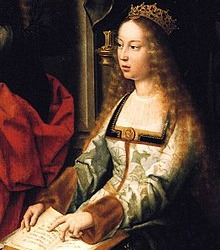
and Fernando II of Aragon (the Catholic monarchs).

She was the fourth of their five surviving children, and had a stillborn twin sister (though some other sources claim that the queen was pregnant with fraternal twins, and the stillborn baby was a boy). Like her sisters, she was given a thorough education, not only in household tasks but also in arithmetic, Latin, several other languages, history, philosophy and the classics.
As an infanta of Spain, her hand in marriage was important in European politics. Before her marriage to Manuel I of Portugal, her parents entertained the idea of marrying her to King James IV of Scotland.
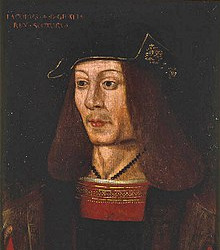
This was at a time when her younger sister Catherine's marriage to Arthur, Prince of Wales, was being planned.

Fernando and Isabel thought if Maria was Queen of Scotland, the two sisters could keep the peace between their husbands. These plans, however, came to nothing. Her eldest sister Isabel, Princess of Asturias, was the first wife of Manuel I, but her death in 1498 created a necessity for Manuel to remarry; Maria became the next bride of the Portuguese king, reaffirming dynastic links with Spanish royal houses.
Manuel and Maria were married in Alcácer do Sal on 30 October 1500, and was granted Viseu and Torres Vedras as her dower. She had 10 children, eight of whom reached adulthood, including King João III of Portugal, Holy Roman Empress Isabel, and Beatriz, Duchess of Savoy.
Queen Maria was described as pale and thin to her exterior, with a retiring chin, and had a very serious character to her personality. Despite the fact that she was queen during a famous time period in Portuguese history, when the Portuguese court was one of the richest in Europe, she did not play any significant part as an individual. Serious and pious, she devoted her time to sewing, pious devotion and supervising the education of her children in accordance with the principles of her parents. She maintained a close correspondence with her parents, got along well with her sister-in-law Isabel and the queen dowager Beatriz, and hosted a large court with both Spanish and Portuguese ladies-in-waiting. King Manuel appreciated her pious nature, treated her with respect and awarded her with expensive clothes and jewelry during her pregnancies.
Queen Maria was not described as politically active, though chronicles praised her for occasionally persuading her husband to an act of mercy. She was, however, somewhat involved in religious politics. She supported King Manuel's religious-imperial project, including the plan to conquer the Mamluk's realm, destroy Mecca and Medina and reconquer Christian holy places such as Jerusalem. She co-founded the Jeronimos Monastery in Lisbon.
During her life in Portugal, Maria was almost continually pregnant. Normally, she had but a few months pause between a delivery and her next pregnancy. This state of affairs resulted in an continual deterioration of her health and after the delivery of 1516, she was reportedly exhausted to a point that she was also temporarily mentally confused before she recuperated. She died in Lisbon on 7 March 1517, and was buried at the Jerónimos Monastery of Belém.

She died as a result of her last pregnancy.
In 1580, the dynastic links from the marriage led to a succession crisis in Portugal that made her grandson Philip II of Spain king of Portugal as Philip I of Portugal.

Her marriage with Manuel produced the following children:
João, Prince of Portugal (7 June 1502 - 11 June 1557), 55 years - Succeeded the throne as João III, King of Portugal.
Infanta Isabel (24 October 1503 - 1 May 1539), 35 years - Holy Roman Empress by marriage to Charles V, Holy Roman Emperor.
Infanta Beatriz (31 December 1504 - 8 January 1538), 33 years - Duchess of Savoy by marriage to Charles III, Duke of Savoy.
Infante Luís (3 March 1506 - 27 November 1555), 49 years - Duke of Beja. Unmarried but had illegitimate descendants, one of them being António, Prior of Crato, a claimant of the throne of Portugal in 1580; see: Portuguese succession crisis of 1580.
Infante Fernando (5 June 1507 - 7 November 1534), 27 years - Duke of Guarda. Married Guiomar Coutinho, 5th Countess of Marialva and 3rd Countess of Loulé (died 1534). No surviving issue.
Infante Afonso (23 April 1509 - 21 April 1540) 30 years - Cardinal of the Roman Catholic Church
Infante Henrique (31 January 1512 - 31 January 1580), 68 years - Cardinal of the Roman Catholic Church who succeeded his grandnephew, King Sebastião (Manuel I's great-grandson), as Cardinal Henrique, King of Portugal. His death triggered the Portuguese succession crisis of 1580.
Infanta Maria (3 February 1513) Died immediately after birth.
Infante Duarte (7 October 1515 - 20 September 1540), 24 years - Duke of Guimarães and great-grandfather of João IV of Portugal. Married Isabel of Bragança, daughter of Jaime, Duke of Bragança.
Infante António (9 September 1516) - Died immediately after birth.
12 notes
·
View notes
Photo

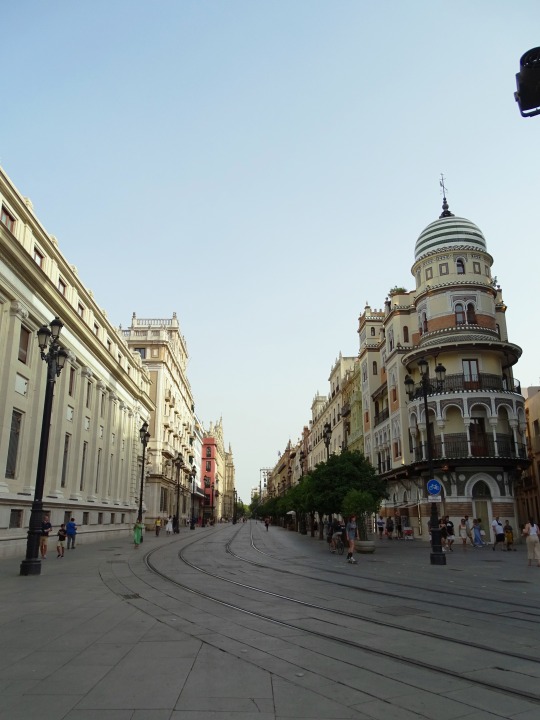

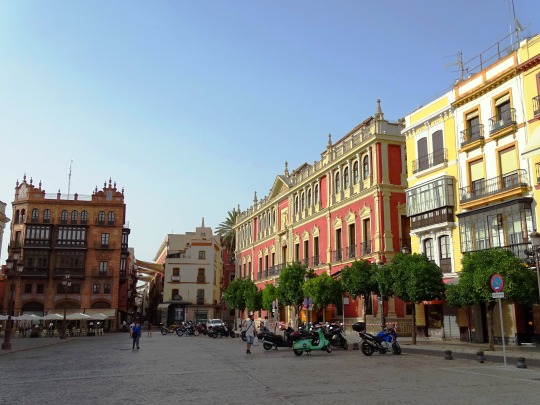
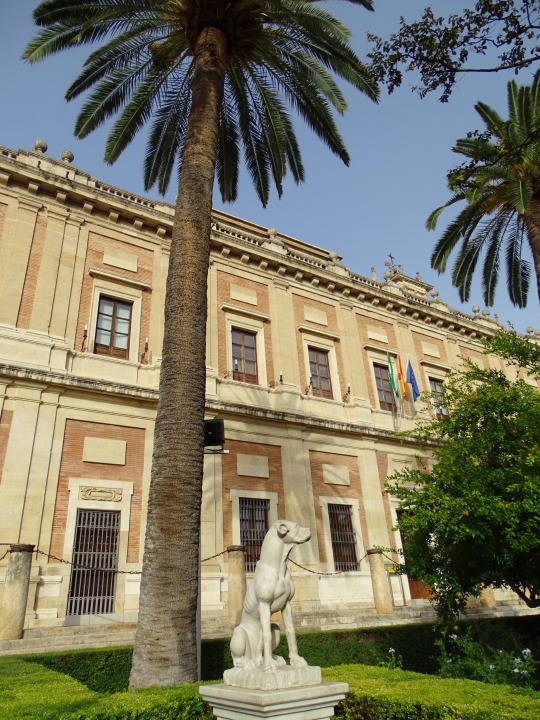
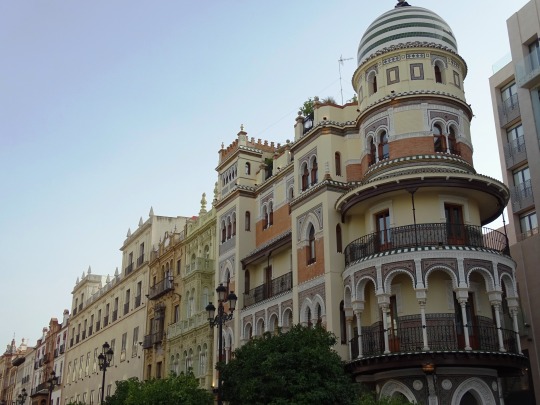
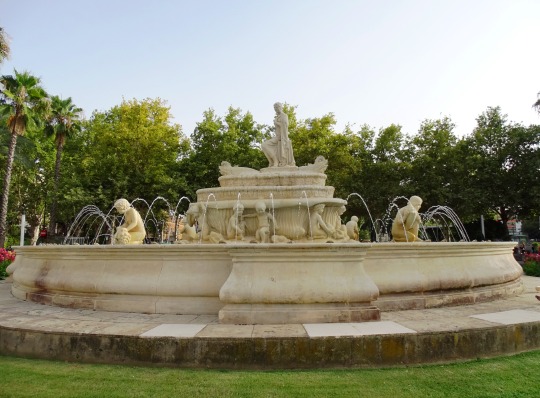
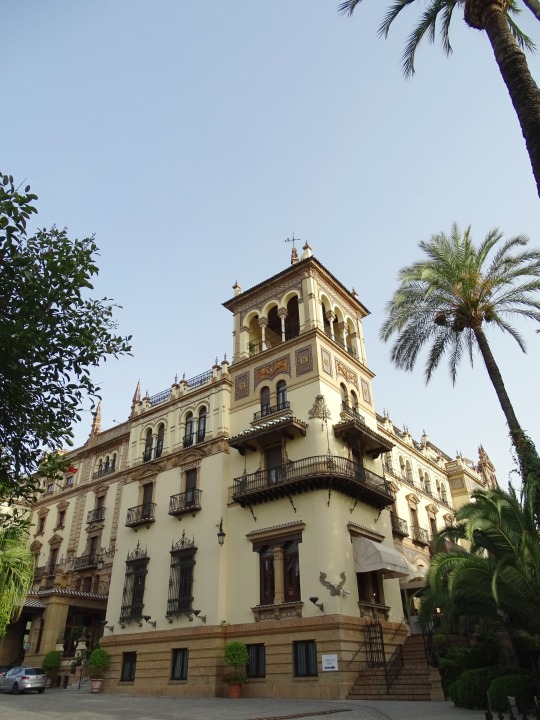
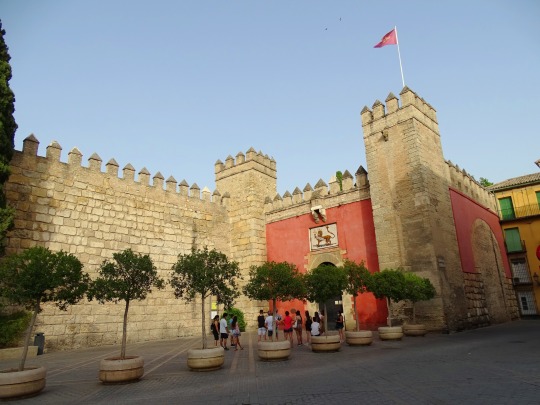

The Casa de Contratación (House of Trade) or Casa de la Contratación de las Indias ("House of Trade of the Indies") was established by the Crown of Castile, on January 20, 1503 in the port of Seville (and transferred to Cádiz in 1717) as a crown agency for the Spanish Empire.
#Casa de la Contratación de las Indias#established#20 January 1503#Spain#520th anniversary#Spanish history#Seville#Sevilla#Seville Cathedral#Avenida de la Constitución#architecture#cityscape#summer 2021#travel#tourist attraction#landmark#original photography#Plaza de San Francisco#city hall#España#Southern Europe#La Adriatica Building by José Espiau y Muño#Híspalis Fountain#Royal Alcázars of Seville#Hotel Alfonso XIII#Casa Lonja de Mercaderes
10 notes
·
View notes
Photo
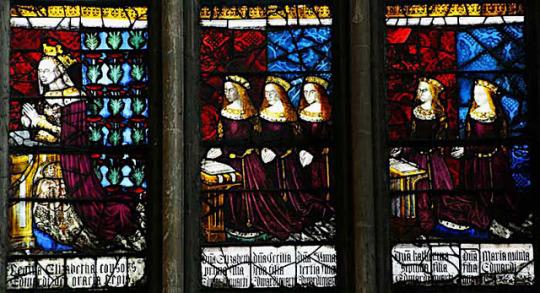
historicwomendaily celebration week: Favourite Sisters
Elizabeth of York (11 February 1466 – 11 February 1503) was the eldest daughter of king Edward IV and his wife queen Elizabeth Woodville. Elizabeth was the Queen Consort of England from 1486 until 1503 as the wife of Henry VII and the first Tudor queen. She married Henry VII in 1486 following the latter's victory at the Battle of Bosworth Field, which started the last phase of the Wars of the Roses. Uniquely, Elizabeth of York was a daughter, sister, niece, wife and mother of English monarchs - Edward IV, Edward V, Richard III, Henry VII and Henry VIII, respectively.
Mary of York (11 August 1467 – 23 May 1482) was the second daughter of Edward IV of England and his queen consort Elizabeth Woodville. In May 1480, Mary was named a Lady of the Garter along with her younger sister Cecily. There were reportedly plans to marry her to John, King of Denmark, bit nothing came of it as Mary died aged 14 at Palace of Placentia in Greenwich on 23 May 1482.
Cecily of York, Viscountess Welles (20 March 1469 – 24 August 1507) was an English princess and the third, but eventual second surviving, daughter of Edward IV, King of England and his queen consort Elizabeth Woodville. In 1474, Cecily was betrothed to the son of James III of Scotland and In 1482 - to the Duke of Albany, who had recently allied himself to Cecily's father, who he died before a marriage to Cecily could take place. Cecily lived at court with her family through the autumn and winter of 1485-1486. She served as her sister’s chief lady-in-waiting once Henry and Elizabeth married that January, and she attended upon her sister throughout the spring and summer while she was pregnant with her first child. When Prince Arthur was born in September 1486, Cecily carried the infant during his christening. At some point in December 1487, when Cecily was 18, she married John, Viscount Welles, Margaret Beaufort’s younger half-brother. After his passing some years later, Cecily married without royal permission a commoner Sir Thomas Kyme, for which her estates were confiscated by Henry. One hopes that this final marriage enabled Cecily to find happiness away from court, but the record of her fades before her death at age 38 in 1507
Anne of York (2 November 1475 – 23 November 1511) was born in the Palace of Westminster, London, as the fifth daughter of King Edward IV of England and his wife, Elizabeth Woodville. On 5 August 1480, King Edward IV signed a treaty agreement with Maximilian I, Archduke of Austria for Anne to marry his son Philip, duke of Burgundy, but the treaty was repudiated after Edward’s death and never took place. In 1484 Anne had been betrothed to Thomas Howard by Richard III. This was one decision that Henry seemed to agree with, and the two were married in 1495 when Anne was nineteen years old. She spent some time at court serving her sister as lady-in-waiting, but little else is known of Anne of York. She found favour under Henry VIII, as evinced by gifts of estates made to her, but she died shortly after his ascendancy, leaving no surviving children.
Catherine or Katherine of York (14 August 1479 – 15 November 1527) was the ninth child and sixth daughter of King Edward IV by his wife Elizabeth Woodville. Catherine was one of many English princesses considered for a Scottish match before she was married to William Courtenay. He spent significant amounts of time in the Tower for his traitorous words regarding Henry VII’s reign before his death in 1511, shortly following his reinstatement as Earl of Devon by Henry VIII. Catherine and her husband were present at court on various important occasions, including the wedding of Arthur Tudor and Katherine of Aragon. Catherine seems to be a favourite aunt of Henry VIII and was enjoying great favour and gifts from him occasionally visiting court. The Courtenay family held great power in the west of England. Catherine, who had taken a vow of chastity after William’s death outlived the remainder of the children of Edward IV dying in 1527.
Bridget of York (10 November 1480 – 1517) was an English princess, the tenth child and seventh daughter of Edward IV of England and Queen Elizabeth Woodville, born less than three years before her father’s death. Bridget entered the Dartford Priory in 1490 at the age of 10, though it is unknown if this was to honour a plan of her father’s, her own wishes, or due to other reasons. Evidence of Bridget’s study of Catholic saints exists, and she spent the remainder of her life as a nun. She died in 1517, never foreseeing the dissolution of the priory that would occur under her nephew, Henry VIII.
pictured: Elizabeth Woodville and her five daughters (left to right): Elizabeth, Cecily, Anne, Catherine, and Mary. Royal Window (c.1482), Northwest Transept, Canterbury Cathedral.
#historyedit#historicwomendaily#elizabeth of york#mary of york#cecily of york#anne of york#catherine of york#bridget of york#15th century#16th century#women in history#my edit
266 notes
·
View notes
Text
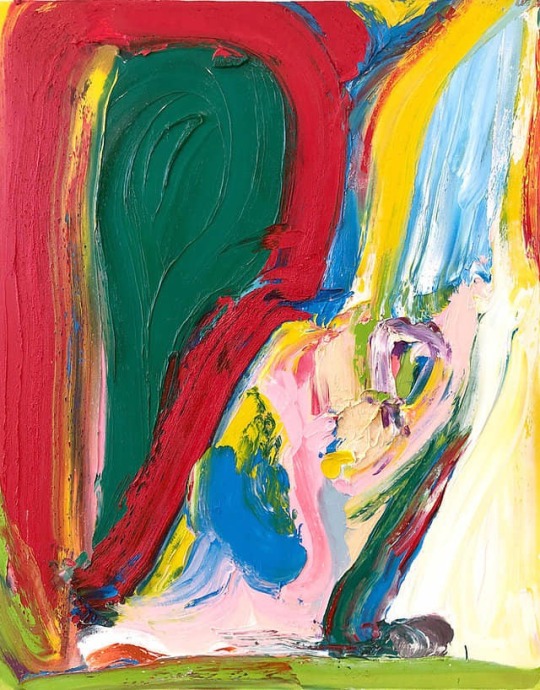
Cheetah 2012 oil on canvas 90.9×72.7㎝
ワンアート台北2019にフマコンテンポラリーさんとロイドワークスギャラリーから木原も数点出品させて頂きます。
(フマさん+ロイド・Room No. 1503)
————-
【ONE ART TAIPEI 2019】
https://www.onearttaipei.com
□FUMA Contemporary Tokyo | BUNKYO ART
□roid works gallery
Room No. 1503 at The Sherwood Taipei
January 18th Fri, 2019
Collector Preview 13:00 - 15:00
VIP Preview 15:00 - 20:00
・・・・・・・・・・・
January 19th Sat 21st Mon, 2019.
Public Preview 12:00 - 20:00
————-
Venue
The Sherwood Taipei
No. 111, Section 3, Minsheng East Road ,Songshan District .105 Taipei,Taiwan
————-
#木原千春#chiharukihara#japanese art#contemporaryart#art#artists on tumblr#japanese#roidworksgallery#cat#cheetah#architecture#landscape architect#music#musician#taipei#art fair#フマコンテンポラリー#roid works gallery#FUMA Contemporary Tokyo
10 notes
·
View notes
Text
Timeline of Henry VIII
AKA, LOOK HOW FAST THE CRAZY HAPPENS
28 June 1491, born
14 November 1501, older brother Arthur marries Catherine of Aragon (Henry aged 10)
2 April 150 , 20 weeks later, Arthur dies; Henry is heir to the throne (aged 10)
11 February 1503, the queen, Henry’s mother, dies (Henry aged 11)
21 April 1509, the king, Henry’s father, dies. Henry becomes king (aged 17)
11 June 1509, 20 days later, Henry marries Catherine of Aragon
24 June 1509, coronation (four days before Henry’s 18th’s birthday)
30 June 1513, Henry invades France (aged 22)
9 September 1513, Queen Catherine defeats the Scots
February 1516, Catherine gives birth to Mary, their only surviving child (Henry aged 24)
15 June 1519, birth of Henry Fitzroy, Henry VIII’s illegitimate son by Elizabeth Blount (Henry aged 27)
7 June 1520, Field of the Cloth of Gold (Henry aged 28)
1525, Henry (aged 34) falls in love with Anne Boleyn
1527, Henry seeks annulment from the Pope (after 19 years of marriage, aged 36. Catherine aged 42, Mary aged 11) THE CRAZY BEGINS
14 November 1532, Henry and Anne Boleyn married in secret (Henry aged 41, Anne 31)
23 May 1533, Henry’s marriage to Catherine declared invalid (after 25 years. Mary aged 17)
7 September 1533, birth of Elizabeth, Henry and Anne’s only surviving child
January 1536, jousting accident and leg injury that lasts the rest of his life (11 years), and a head injury that may have caused his mood swings. Aged 45. THE CRAZY INTENSIFIES
1536 dissolution of the monasteries begins
19 May 1536, Anne executed (after 3 years of marriage. Henry aged 45, Elizabeth aged 2)
30 May 1536, Henry marries Jane Seymour
23 July 1536, death of Henry Fitzroy (illegitimate son, aged 15)
1536, legally annexes Wales, declares Mary and Elizabeth illegitimate
October 1536, Pilgrimage of Grace, the most serious of all Tudor rebellions
12 October 1537, birth of Edward, Jane’s only child
24 October 1537, death of Jane (after 1 year of marriage, Jane aged 29, Henry aged 46)
late 1538, Pilgrimage of Grace quelled
17 December 1538, Henry excommunicated by the Pope
6 January 1540, married Anne of Cleves (aged 25, Henry aged 48)
9 July 1540, marriage to Anne annulled (after 6 months)
28 July 1540, Thomas Cromwell executed; Henry marries Catherine Howard the same day (aged 19; Henry aged 49)
1541, Catherine has affair with Thomas Culpeper
23 November 1541, Catherine imprisoned (after 1 year of marriage)
13 February 1542, Catherine executed (aged 21, Henry aged 51)
1542, completion of the Dissolution of the Monasteries (takes 6 years)
1543-1551, The Rough Wooing: war with Scotland
12 July 1543, married Catherine Parr (aged 31, Henry aged 52)
1543, Mary and Elizabeth returned to the succession
1544-1546, war with France
28 January 1547, death, aged 55. Supposed last words: “Monks! Monks! Monks!” (After 3 years of marriage. Catherine aged 35, Mary aged 30, Elizabeth aged 13, Edward aged 9) Edward takes the throne.
LOOK HOW FAST ALL THE CRAZY HAPPENS.
1 note
·
View note
Text
A Renaissance Chiaroscuro Woodcut
This print, with its striking green hue, is the result of an innovative collaboration between two Italian Renaissance artists. Working together in Bologna in the late 1520s, the painter Francesco Mazzola (called Parmigianino, 1503-1540) and the printmaker Antonio da Trento (1508-1550) were early adopters of a new technique that allowed for the production of multicolored prints like this one, called chiaroscuro woodcuts.[1] Borrowed from Italian, the term “chiaroscuro” signals a close, contrasting juxtaposition of areas of light (chiaro) and dark (scuro). In printmaking, it more specifically refers to the building of visual depth through the superimposition of separate layers of differently colored ink.
To create a standard woodcut, an artist applies ink to a single carved block, which is then impressed on paper. A chiaroscuro woodcut, on the other hand, involves multiple carved blocks. Each of these is inked with a different color tone, and impressed on the paper in succession. For this particular image, the printmaker employed two blocks, one with green ink, the other with black. The green fills most of the sheet, while the black defines the forms and creates zones of shadow. A third color—creamy yellow-white—is provided by the paper itself. Revealed in the areas lacking ink, these bright spaces serve as highlights, contributing to the illusion of depth. The result belies the manufacture: the final image approximates a drawing in black and white ink on green paper.
As designer, Parmigianino was responsible for devising the composition, which da Trento then translated into the print medium. Here, the nude figure of a young man—heroically muscled but still lithe and lean—can be directly related to one of Parmigianino’s drawings, now in Modena.[2] The subject of the image, however, remains somewhat mysterious. The traditional title, “Nude Man Seen from Behind,” dates to the sixteenth century.[3] More recently, some interpreters have proposed that the seated young man with his elegant, elongated back should be identified as Narcissus, a character from Ovid’s Metamorphoses.[4] Enamored of his own reflection, Narcissus gazes into a still pool within a secluded wood. The nymph Echo, thus neglected by her beloved, wastes away until only her voice remains. Perhaps hers then is the stony female profile that appears at the lower left of the print, captured in the process of disappearing from sight.
[1] On the history of the medium and its Italian practitioners, see Naoko Takahatake, ed., The Chiaroscuro Woodcut in Renaissance Italy (Prestel Verlag GmbH & Company KG, 2018), produced in conjunction with an exhibition of the same name organized by LACMA (June 3 – September 16, 2018) in association with the National Gallery of Art, Washington (October 14, 2018 – January 20, 2019). Versions of this print (some in different colors) are included in the exhibition. (Standard reference: Bartsch XII.148.13.)
[2] Nude Man Seen from Behind. Black chalk, heightened with white, on buff paper, 25.6 x 17.6 cm. Modena, Galleria Estense. See David Ekserdjian, Parmigianino (New Haven: Yale UP, 2006), fig. 179, page 174.
[3] Giorgio Vasari, Le vite de’ piu eccelenti pittori, scultori, et architettori , part III, vol. 1 (Florence: Giunti, 1568), 304.
[4] E.g., David Franklin. The Art of Parmigianino (New Haven: Yale UP, 2003), 214.
Dr. Julia Siemon is Assistant Curator of Drawings, Prints & Graphic Design at Cooper Hewitt, Smithsonian Design Museum.
from Cooper Hewitt, Smithsonian Design Museum https://ift.tt/2LGNQs3
via IFTTT
5 notes
·
View notes